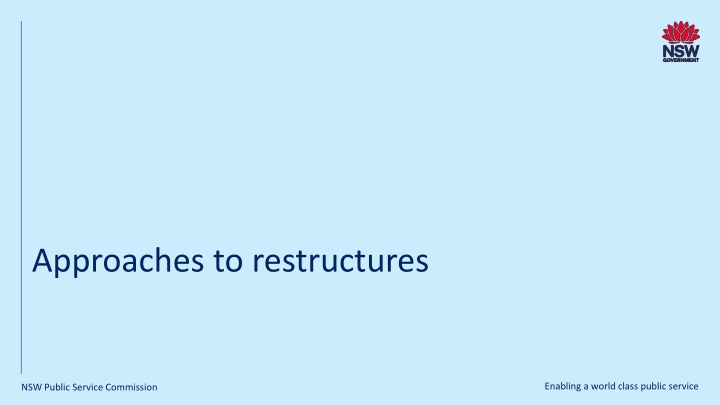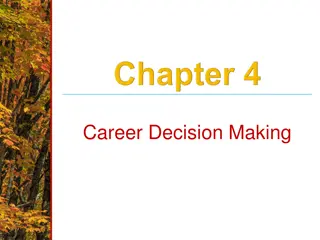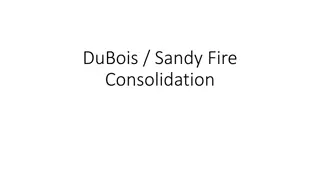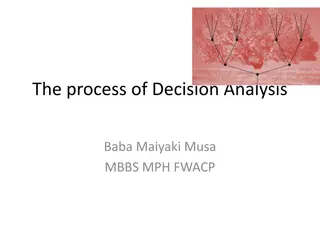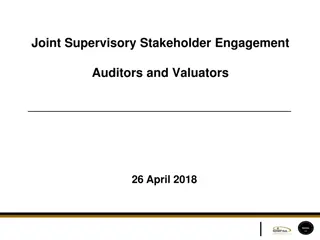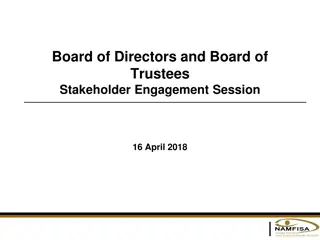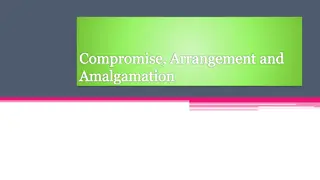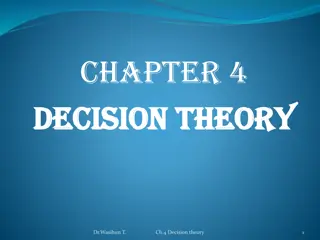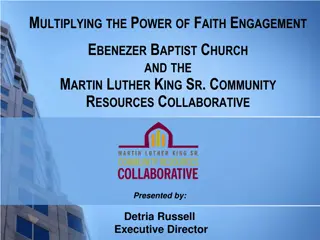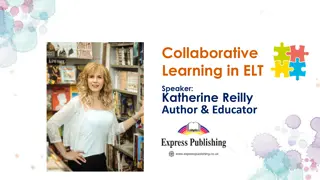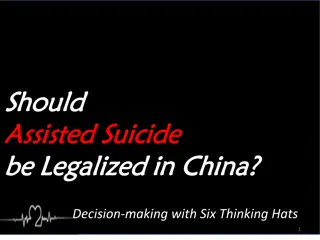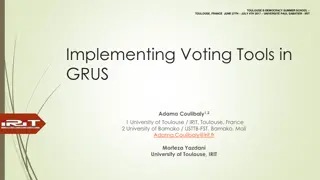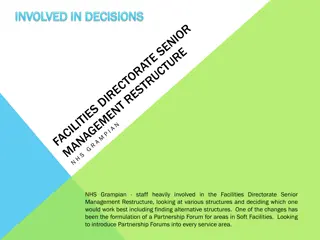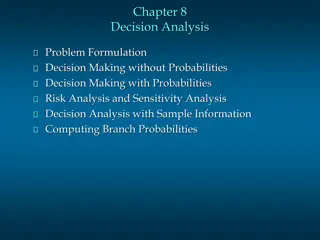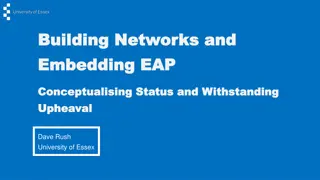Collaborative Approach to Restructuring for Enhanced Decision-Making
Engage key stakeholders early in the restructuring process to meet diverse needs and ensure effective communication. Balancing perspectives and incorporating collaboration enhances decision-making, stakeholder engagement, and organizational culture.
Download Presentation

Please find below an Image/Link to download the presentation.
The content on the website is provided AS IS for your information and personal use only. It may not be sold, licensed, or shared on other websites without obtaining consent from the author.If you encounter any issues during the download, it is possible that the publisher has removed the file from their server.
You are allowed to download the files provided on this website for personal or commercial use, subject to the condition that they are used lawfully. All files are the property of their respective owners.
The content on the website is provided AS IS for your information and personal use only. It may not be sold, licensed, or shared on other websites without obtaining consent from the author.
E N D
Presentation Transcript
Approaches to restructures Enabling a world class public service NSW Public Service Commission
Taking a collaborative approach to a restructure Taking a collaborative approach to a restructure When you are planning a restructure, it s important to engage key stakeholders early in the process. A collaborative approach will ensure that the diverse needs of your staff, organisation and customers are met, and staff feel supported and communicated with. The more thorough your stakeholder engagement is the better you will be able to influence the level of stakeholder resistance throughout the change. Considerations When combined with best practice research and analytical evidence, taking a collaborative approach to your restructure will refine and enhance your decision-making. It will also increase opportunities for employee voices to be heard, which may maintain your workplace culture and employee engagement throughout the change. Balancing several diverse perspectives can be challenging and time-consuming. There could be contradictory or conflicting views that may not align with the rationale and intended outcomes of the change. How this might look in practice To identify the level of collaboration needed for your organisation, consider about your organisation s context, operating environment, objectives of the restructure, IR/ER constraints, project timeframes and allocated resources. Identify whether you will need a light touch or high touch approach when developing your organisation s design. A higher touch approach typically requires more preparation and facilitation, as it is about involving stakeholders at all steps of the process. Having detailed input from key stakeholders throughout the entire process allows you to develop an organisation design that is best suited to your organisation and its workforce. A light touch approach typically takes less time and requires less resources, but the outputs may not consider all the aspects of effectively developing your organisation s design, such as systems, delegations, ways of working and processes. We recommend you refer to the stakeholder engagement resources to help you identify which stakeholders you will need to collaborate with. NSW Public Service Commission Enabling a world class public service 2
Levels of collaborative design The table below lists the key steps required when taking a light touch or high touch collaborative approach for each stage of the restructuring process. Stage Light touch approach High touch approach Have an exploratory discussion with senior leaders through meetings and follow up actions Undertake current state functional analysis through facilitation with senior leaders and key subject matter experts Establish project team by identifying what capabilities are required to lead and manage the change, collaborate and negotiate required resources to set up project team Stage 1 - Explore: explore organisational needs to identify whether a restructure is the right solution Have the exploratory discussion through a meeting Obtain current state functional analysis, review and update as necessary Set up project team with agreement from heads Identify the objectives and desired outcomes for the restructure with endorsement from senior leaders Develop design principles for endorsement by senior leaders Develop why narrative for endorsement by senior leaders Identify the objectives, scope and desired outcomes for the restructure through facilitated workshops Develop design principles in collaboration with senior leaders to inform the why narrative Stage 2 - Scope: identify the objectives, scope, and desired outcomes for the restructure Stage 3 - Plan: plan the approach to the restructure, including how you will resource, design and collaborate Identify stakeholder engagement plan in collaboration with the project sponsor, lead and team Identify if there is a need to engage consultants in consultation with senior leaders Identify stakeholder engagement plan Identify if there is a need to engage consultants NSW Public Service Commission Enabling a world class public service 3
Levels of collaborative design (cont.) Stage Light touch approach High touch approach Stage 4 - Design: develop the organisational design and implementation plan Develop the high-level and detailed organisation design for endorsement from senior leaders and approval from key decision maker Co-design the high-level and detailed organisation design for endorsement from senior leaders and approval from key decision maker, through facilitated workshops Stage 5 - Implement: implement the new structure and any associated changes Develop implementation and change management plan in collaboration with project team and key SMEs across the business Develop implementation and change management plan Stage 6 - Embed: monitor and evaluate the success of the restructure and readjust to make the change stick Evaluate outcomes of the restructure, conduct a post- implementation review and survey employees to assess the success of the restructure Evaluate outcomes of the restructure, conduct post-implementation review meeting to discuss findings and learnings and survey employees to assess the success of the restructure NSW Public Service Commission Enabling a world class public service 4
Consultation vs collaboration The table below lists the benefits and risks of taking a consultative or collaborative approach throughout a restructure. Consider how the benefits and risks each approach will have on your organisation, how it will impact stakeholder engagement and identify which approach will work best for your organisation. Consultation Collaboration Increase opportunities for employee s voices can be heard and to be involved in developing the organisation s design Improve communication and change management PMES scores Satisfy consultation requirements Minimise risks with implementing change without consultation Benefits Will it be subject to scrutiny by unions? Consulting numerous stakeholder groups will be difficult to manage if there are conflicting ideas/options Requires more time, effort and resources to co-design and develop the organisation s design and agree on any associated changes (i.e. to systems, processes, delegations, ways of working) Risks NSW Public Service Commission Enabling a world class public service 5
Overview of other restructure approaches Review the below worksheet to identify which approach you would like to take to develop your organisational design. Consider your organisation s context and the rationale of the proposed change, when deciding which approach or combination of approaches you d like to take. Approach Objective Questions to consider Outputs (benefits of this approach) Are there any IR or consultation constraints if we take a co- design approach with impacted stakeholders? Which roles/teams will be impacted by the changes, and how can we best engage them in design activities? Design decisions that have consensus and commitment from key stakeholders Less employee resistance and better employee engagement throughout the change Identify if a co-design approach can be applied to developing the organisational design. Ensure changes meets diverse needs including impacted staff, the organisation and customers Collaborative design What can we adopt from other organisations who addressed similar challenges? Can we apply their redesign approach, strategies and learnings? Can our organisation design choices be modified to align with the practices you ve identified? Relevant examples of effective design decisions made in other similar agencies or organisations performing similar functions External strategies that can be leveraged Research design practices undertaken by other public, private and non-for- profit organisations and use these insights to inform your redesign approach Best practice research What data do we need to develop our organisation design (e.g. employee and finance data, data from workforce plans and People Matter Employee Surveys)? How will this data inform design decisions (e.g. benchmarking of workforce costs, organisational layers and spans of control, budget allocation)? Data based evidence supporting a case for change and the why rationale Data that informs design decisions on team sizes, layers, spans of control etc Identify data sources required to develop the organisational design, test design choices and model workforce sizing decisions Data based insights NSW Public Service Commission Enabling a world class public service 6
